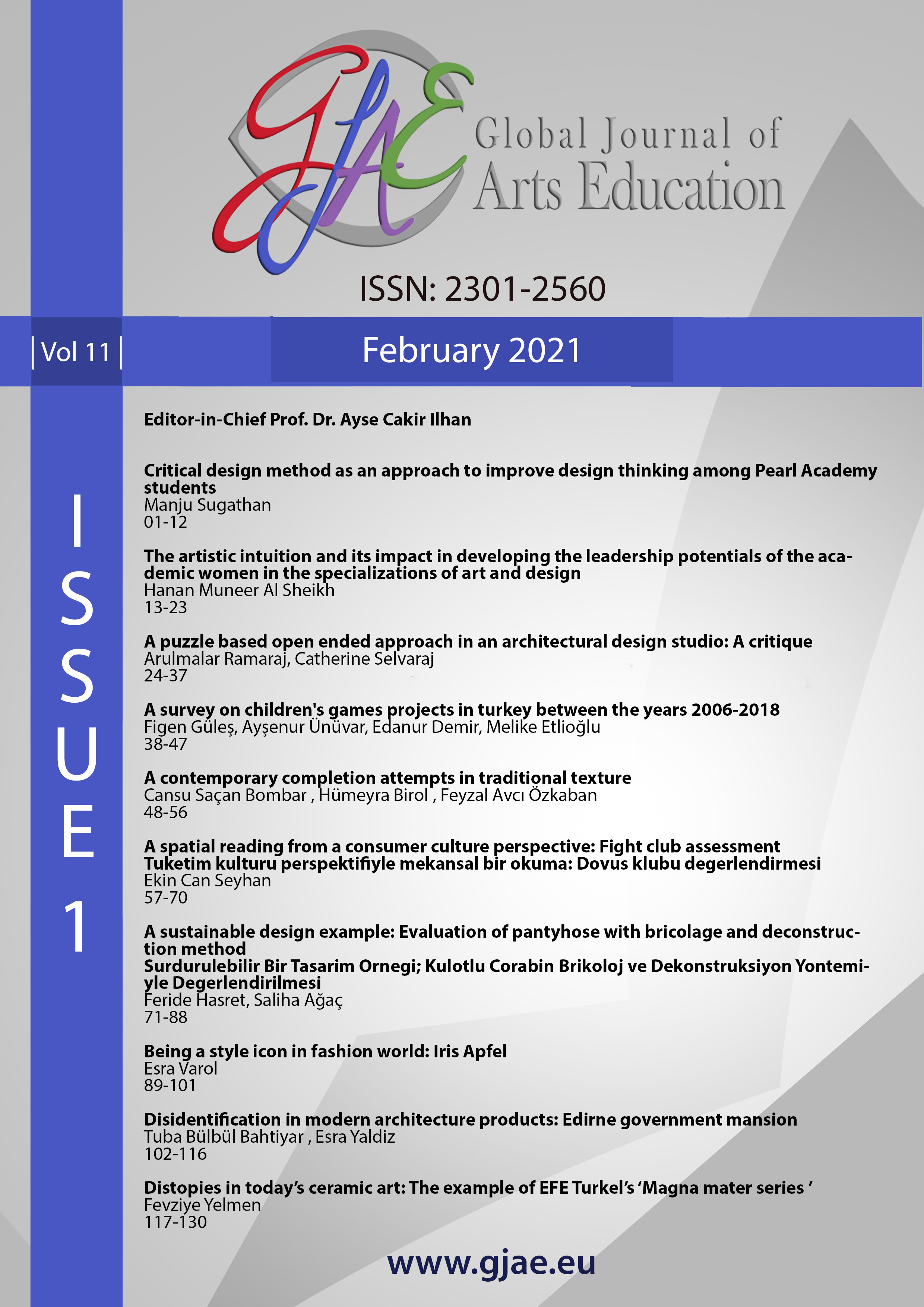A sustainable design example: Evaluation of pantyhose with bricolage and deconstruction method
Main Article Content
Abstract
Abstract
The developments in technology, industry and economy during the 21st century have affected all sectors, as well as the fashion industry. The effects of those developments have been seen as fast fashion and fast consumption which caused the fashion industry to be ranked as second among the industries seriously damaging the environment. Within the scope of sustainable fashion, the concepts of recycling and upcycling have come up with reducing environmental damage, pollution prevention and liveable environment. Within the scope of this study, pantyhose, which is used mostly by women and has a low usage due to its thin and flexible structure, was evaluated in the context of sustainability. The starting point is the recovery of waste socks for reducing environmental damage by experimental implementations in terms of the biodegradability of the pantyhose with the content of nylon material derived by combining coal and chemicals from oil and the long period of extinction in nature. Therefore, examining pantyhose with the concept of upcycling, eight experimental designs were made with bricolage and deconstruction methods. At the end of the experimental design process, it has been observed that the socks were suitable for the sewing process, were not deformed and were not misshaped, despite their flexible structure when used in the production of clothing types. It has been observed that pantyhose is not misshaped during the implementations of traditional decoration techniques (compressed felt, cord fastening, encrusted applique and patchwork); it showed great results for usability; it can be used as an alternative material in fancy clothing, for widening narrow clothes and to make creative designs using each part. In this study, it was aimed to reuse the wasted pantyhose and to add effective, functional, aesthetic value to pantyhose in the clothing and fashion industry. The pantyhose is important for its contribution to sustainability by reducing the amount of waste, as a result of implementations being used as an alternative to other materials and being suitable for improving the creativity of individuals.
Keywords: Waste, pantyhose, bricolage, deconstruction, sustainable fashion.
Downloads
Article Details

This work is licensed under a Creative Commons Attribution 4.0 International License.
Authors who publish with this journal agree to the following terms:
- Authors retain copyright and grant the journal right of first publication with the work simultaneously licensed under a Creative Commons Attribution License that allows others to share the work with an acknowledgement of the work's authorship and initial publication in this journal.
- Authors are able to enter into separate, additional contractual arrangements for the non-exclusive distribution of the journal's published version of the work (e.g., post it to an institutional repository or publish it in a book), with an acknowledgement of its initial publication in this journal.
- Authors are permitted and encouraged to post their work online (e.g., in institutional repositories or on their website) prior to and during the submission process, as it can lead to productive exchanges, as well as earlier and greater citation of published work (See The Effect of Open Access).

